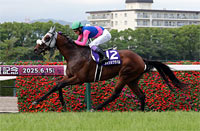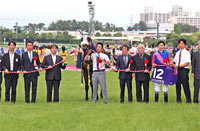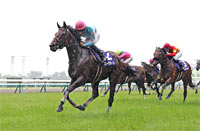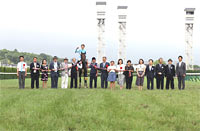Takarazuka Kinen (G1) - Data Analysis
Spring champion decider gathers elite runners that have already demonstrated leadership on big stages
Of the 11 winners in the Takarazuka Kinen since 2012, only two did not have experience of winning a domestic or overseas G1 race since the previous year: Lovely Day in 2015 and Mikki Rocket in 2018. In addition, of the 24 winners in the Takarazuka Kinen since 1999, only two did not have experience of finishing in the Top 4 of a domestic or overseas G1 race since the previous year: Eishin Deputy in 2008 and Lovely Day in 2015. In other words, a solid track record appears to be a prerequisite to dominate the champion decider of the spring season. Let’s now analyze some features shared by successful runners in this race based on results over the last 10 years.
Strong performance by runners with 22 or fewer career starts and by fillies/mares
Of the 30 Top 3 finishers over the last 10 years, 27 had 22 or fewer career starts. Conversely, runners with 23 or more career starts struggled with a Top 3 ratio of 6.7%. We should therefore not expect too much from runners with 23 or more career starts. [Table 1]
[Table 1] Performance by total career starts (last 10 years)
| Total career starts |
Performance
[1st-2nd-3rd-4th or lower] |
Win ratio |
Top 2 ratio |
Top 3 ratio |
| 22 or fewer |
10-8-9-71 |
10.2% |
18.4% |
27.6% |
| 23 or more |
0-2-1-42 |
0% |
4.4% |
6.7% |
In addition, of the 30 Top 3 finishers over the last 10 years, 11 were fillies/mares. Fillies/mares also achieved an excellent Top 3 ratio of 42.3%. This suggests we should expect more of fillies/mares than of colts/horses or geldings. [Table 2]
[Table 2] Performance by gender (last 10 years)
| Gender |
Performance
[1st-2nd-3rd-4th or lower] |
Win ratio |
Top 2 ratio |
Top 3 ratio |
| Colts/horses |
6-7-4-90 |
5.6% |
12.1% |
15.9% |
| Geldings |
0-2-0-8 |
0% |
20.0% |
20.0% |
| Fillies/mares |
4-1-6-15 |
15.4% |
19.2% |
42.3% |
Watch finish and distance in previous race
Of the 30 Top 3 finishers over the last 10 years, 19 had finished in the Top 4 of their previous race. Meanwhile, runners that had finished 5th or lower struggled somewhat with a Top 3 ratio of 15.1%. [Table 3]
[Table 3] Performance by finish in previous race (last 10 years)
| Finish in previous race |
Performance
[1st-2nd-3rd-4th or lower] |
Win ratio |
Top 2 ratio |
Top 3 ratio |
| 4th or higher |
7-6-6-51 |
10.0% |
18.6% |
27.1% |
| 5th or lower |
3-4-4-62 |
4.1% |
9.6% |
15.1% |
In addition, among the 11 runners that finished in the Top 3 despite having finished 5th or lower in their previous race, 10 had contested a race with a distance of 1,600m or 3,200m in their previous race. In other words, we should lower our expectations of runners that have contested a race with a distance of around 2,200m in their previous race and failed to rise to the top of that race. [Table 4]
[Table 4] Among runners that had finished 5th or lower in previous race, performance by distance of previous race (last 10 years)
| Distance of previous race |
Performance
[1st-2nd-3rd-4th or lower] |
Win ratio |
Top 2 ratio |
Top 3 ratio |
| 1,600m |
0-1-3-7 |
0% |
9.1% |
36.4% |
Above 1600m,
but below 3,200m |
1-0-0-38 |
2.6% |
2.6% |
2.6% |
| 3,200m |
2-3-1-17 |
8.7% |
21.7% |
26.1% |
Runners with a Top 8 finish in a G1 race since the previous year have an edge
Of the 30 Top 3 finishers over the last 10 years, 26 had experience of finishing in the Top 8 of “a JRA G1 race since the previous year.” Conversely, runners without such experience struggled with a Top 3 ratio of 9.8%. We should therefore be wary of runners that have finished outside of the Top 8 in G1 races since 2022, and those that have consistently entered non-G1 races. [Table 5]
[Table 5] Performance by experience of finishing in Top 8 of “JRA G1 race since previous year” (last 10 years)
| Experience |
Performance
[1st-2nd-3rd-4th or lower] |
Win ratio |
Top 2 ratio |
Top 3 ratio |
| Yes |
10-7-9-76 |
9.8% |
16.7% |
25.5% |
| No |
0-3-1-37 |
0% |
7.3% |
9.8% |
In addition, among the four runners that finished in the Top 3 without experience of having finished in the Top 8 of “a JRA G1 race since the previous year,” three had experience of finishing in the Top 3 of “a JRA graded race since May of the same year.” In other words, we need to discount runners that have finished outside of the Top 8 in G1 races since 2022 and also have not finished in the Top 3 of a JRA graded race since May of the same year. [Table 6]
[Table 6] Among runners without experience of finishing in Top 8 of “JRA G1 race since previous year,” performance by experience of finishing in Top 3 of “JRA graded race since May of same year” (last 10 years)
Experience |
Performance
[1st-2nd-3rd-4th or lower] |
Win ratio |
Top 2 ratio |
Top 3 ratio |
| Yes |
0-2-1-6 |
0% |
22.2% |
33.3% |
| No |
0-1-0-31 |
0% |
3.1% |
3.1% |
Runners that have enjoyed success at G1 races at Hanshin Racecourse have fared well
Of the 12 Top 3 finishers in the last four years, nine had experience of finishing in the Top 2 of “a G1 race at Hanshin Racecourse.” Conversely, runners without such experience struggled with a Top 3 ratio of 6.8%. If trends in recent years are anything to go by, we should first focus our attention on runners that have experience of finishing in the Top 2 of a G1 race at Hanshin Racecourse (i.e., the same race grade and venue as for the Takarazuka Kinen). [Table 7]
[Table 7] Performance by experience of finishing in Top 2 of “G1 race at Hanshin Racecourse” (last four years)
| Experience |
Performance
[1st-2nd-3rd-4th or lower] |
Win ratio |
Top 2 ratio |
Top 3 ratio |
| Yes |
4-2-3-7 |
25.0% |
37.5% |
56.3% |
| No |
0-2-1-41 |
0% |
4.5% |
6.8% |
In addition, the three runners that finished in the Top 3 without having previously finished in the Top 2 of “a G1 race at Hanshin Racecourse” all had experience of “finishing 4th or higher in a race with a field of 14 or more runners at Nakayama Racecourse or Hanshin Racecourse in the same year, and being positioned 5th or lower when passing the 4th corner in that race.” This means we should be skeptical of runners that do not have the aforementioned experience and also have not finished in the Top 2 of a G1 race at Hanshin Racecourse. [Table 8]
[Table 8] Among runners without experience of finishing in Top 2 of “G1 race at Hanshin Racecourse,” performance by experience of “finishing 4th or higher in race with field of 14 or more runners at Nakayama Racecourse or Hanshin Racecourse, and being positioned 5th or lower when passing 4th corner in that race” (last four years)
| Experience |
Performance
[1st-2nd-3rd-4th or lower] |
Win ratio |
Top 2 ratio |
Top 3 ratio |
| Yes |
0-2-1-7 |
0% |
20.0% |
30.0% |
| No |
0-0-0-34 |
0% |
0% |
0% |
Seek out the winner!
Focus on runners with more positives
The four last winners all had experience of winning “a JRA G1 race since the previous year.” Other shared features among the four winners were the fact that they had 19 or fewer career starts, that they had finished in the Top 3 of their previous race, and that they had experience of finishing in the Top 2 of a “G1 race at Hanshin Racecourse.” We should therefore also focus on the trends outlined in Table 1, Table 3 and Table 7. [Table 9]
[Table 9] Winners’ highest finish in JRA G1 race since previous year, total career starts, finish in previous race, and highest finish in G1 race at Hanshin Racecourse (last four years)
| Year |
Winner |
Highest finish in JRA G1
race since previous year |
Total career
starts
|
Finish in previous
race |
Highest finish in G1 race at
Hanshin Racecourse |
| 2019 |
Lys Gracieux |
1st (2018 Queen Elizabeth II Cup) |
19 |
3rd |
2nd (2017 Oka Sho [Japanese 1000 Guineas], etc.) |
| 2020 |
Chrono Genesis |
1st (2019 Shuka Sho) |
10 |
2nd |
2nd (2020 Osaka Hai, etc.) |
| 2021 |
Chrono Genesis |
1st (2020 Arima Kinen [The Grand Prix], etc.) |
14 |
2nd |
1st (2020 Takarazuka Kinen) |
| 2022 |
Titleholder |
1st (2022 Tenno Sho [Spring], etc.) |
11 |
1st |
1st (2022 Tenno Sho [Spring], etc.) |
(Masaya Ibuki)
|



















